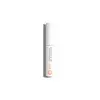What's inside
What's inside
 Key Ingredients
Key Ingredients

 Benefits
Benefits

 Concerns
Concerns

 Ingredients Side-by-side
Ingredients Side-by-side

Water
Skin ConditioningButylene Glycol
HumectantHydroxyethylcellulose
Emulsion StabilisingSodium Hyaluronate
HumectantOctapeptide-2
Skin ConditioningCopper Tripeptide-1
Skin ConditioningSh-Polypeptide-1
Skin ConditioningCucurbita Pepo Seed Extract
Skin ConditioningGlycine Soja Oil
EmollientGlycerin
HumectantHydrogenated Lecithin
EmulsifyingRhizobian Gum
Biotin
AntiseborrhoeicDicalcium Phosphate
AbrasivePanthenol
Skin ConditioningPantethine
EmollientDipotassium Glycyrrhizate
HumectantAllantoin
Skin ConditioningSea Water
HumectantAlcohol
AntimicrobialIsopropyl Cloprostenate
Phenoxyethanol
PreservativeDisodium EDTA
Citric Acid
BufferingChlorphenesin
AntimicrobialSorbic Acid
PreservativeSodium Oleate
CleansingPotassium Sorbate
PreservativeSodium Hydroxide
BufferingWater, Butylene Glycol, Hydroxyethylcellulose, Sodium Hyaluronate, Octapeptide-2, Copper Tripeptide-1, Sh-Polypeptide-1, Cucurbita Pepo Seed Extract, Glycine Soja Oil, Glycerin, Hydrogenated Lecithin, Rhizobian Gum, Biotin, Dicalcium Phosphate, Panthenol, Pantethine, Dipotassium Glycyrrhizate, Allantoin, Sea Water, Alcohol, Isopropyl Cloprostenate, Phenoxyethanol, Disodium EDTA, Citric Acid, Chlorphenesin, Sorbic Acid, Sodium Oleate, Potassium Sorbate, Sodium Hydroxide
Water
Skin ConditioningGlycerin
Humectant1,2-Hexanediol
Skin ConditioningIsoamyl Laurate
EmollientPersea Gratissima Oil
Skin ConditioningRicinus Communis Seed Oil
MaskingArginine
MaskingPanthenol
Skin ConditioningBiotinoyl Tripeptide-1
Tetrasodium Disuccinoyl Cystine
Lysolecithin
EmulsifyingSclerotium Gum
Emulsion StabilisingXanthan Gum
EmulsifyingPullulan
Silica
AbrasiveCitric Acid
BufferingSodium Dehydroacetate
PreservativeO-Cymen-5-Ol
Antimicrobial
 Reviews
Reviews

Ingredients Explained
These ingredients are found in both products.
Ingredients higher up in an ingredient list are typically present in a larger amount.
Citric Acid is an alpha hydroxy acid (AHA) naturally found in citrus fruits like oranges, lemons, and limes.
Like other AHAs, citric acid can exfoliate skin by breaking down the bonds that hold dead skin cells together. This helps reveal smoother and brighter skin underneath.
However, this exfoliating effect only happens at high concentrations (20%) which can be hard to find in cosmetic products.
Due to this, citric acid is usually included in small amounts as a pH adjuster. This helps keep products slightly more acidic and compatible with skin's natural pH.
In skincare formulas, citric acid can:
While it can provide some skin benefits, research shows lactic acid and glycolic acid are generally more effective and less irritating exfoliants.
Most citric acid used in skincare today is made by fermenting sugars (usually from molasses). This synthetic version is identical to the natural citrus form but easier to stabilize and use in formulations.
Read more about some other popular AHA's here:
Learn more about Citric AcidGlycerin is already naturally found in your skin. It helps moisturize and protect your skin.
A study from 2016 found glycerin to be more effective as a humectant than AHAs and hyaluronic acid.
As a humectant, it helps the skin stay hydrated by pulling moisture to your skin. The low molecular weight of glycerin allows it to pull moisture into the deeper layers of your skin.
Hydrated skin improves your skin barrier; Your skin barrier helps protect against irritants and bacteria.
Glycerin has also been found to have antimicrobial and antiviral properties. Due to these properties, glycerin is often used in wound and burn treatments.
In cosmetics, glycerin is usually derived from plants such as soybean or palm. However, it can also be sourced from animals, such as tallow or animal fat.
This ingredient is organic, colorless, odorless, and non-toxic.
Glycerin is the name for this ingredient in American English. British English uses Glycerol/Glycerine.
Learn more about GlycerinPanthenol is a common ingredient that helps hydrate and soothe the skin. It is found naturally in our skin and hair.
There are two forms of panthenol: D and L.
D-panthenol is also known as dexpanthenol. Most cosmetics use dexpanthenol or a mixture of D and L-panthenol.
Panthenol is famous due to its ability to go deeper into the skin's layers. Using this ingredient has numerous pros (and no cons):
Like hyaluronic acid, panthenol is a humectant. Humectants are able to bind and hold large amounts of water to keep skin hydrated.
This ingredient works well for wound healing. It works by increasing tissue in the wound and helps close open wounds.
Once oxidized, panthenol converts to pantothenic acid. Panthothenic acid is found in all living cells.
This ingredient is also referred to as pro-vitamin B5.
Learn more about PanthenolWater. It's the most common cosmetic ingredient of all. You'll usually see it at the top of ingredient lists, meaning that it makes up the largest part of the product.
So why is it so popular? Water most often acts as a solvent - this means that it helps dissolve other ingredients into the formulation.
You'll also recognize water as that liquid we all need to stay alive. If you see this, drink a glass of water. Stay hydrated!
Learn more about Water